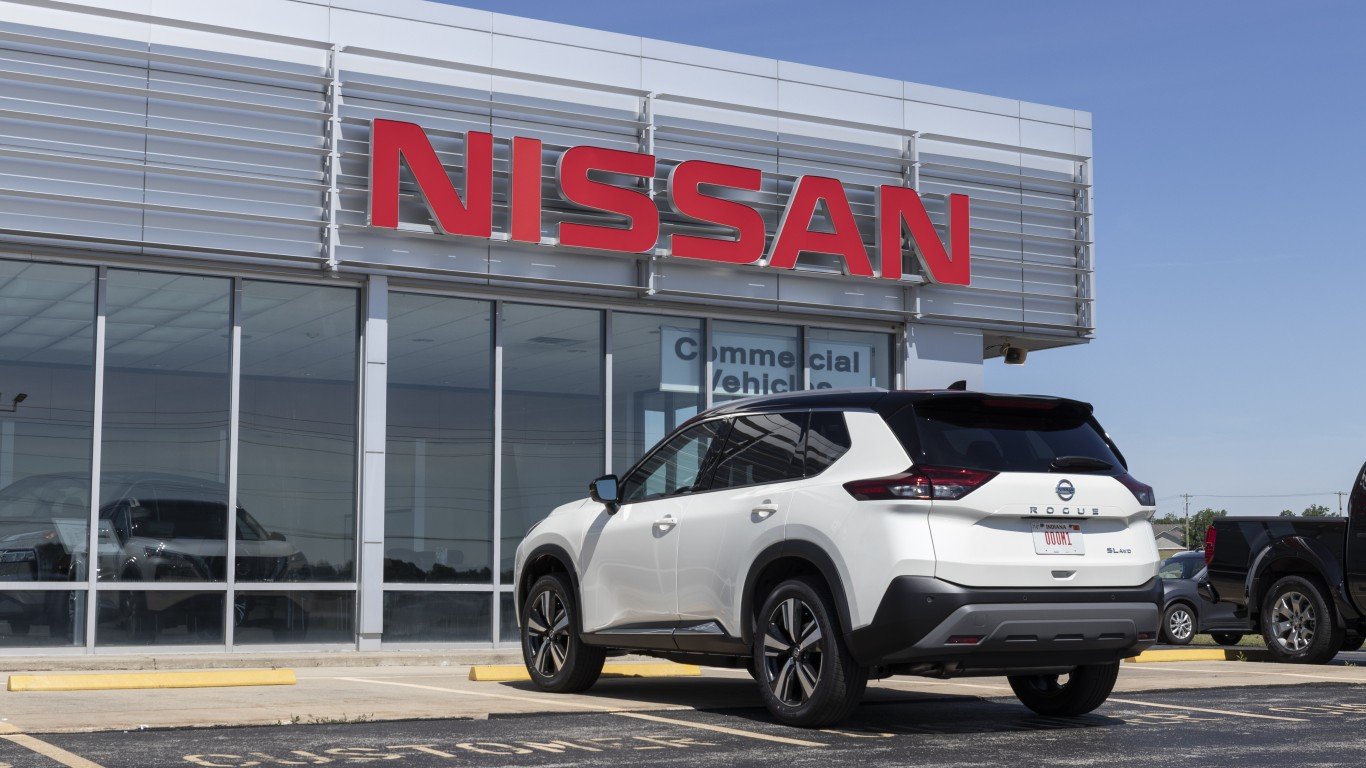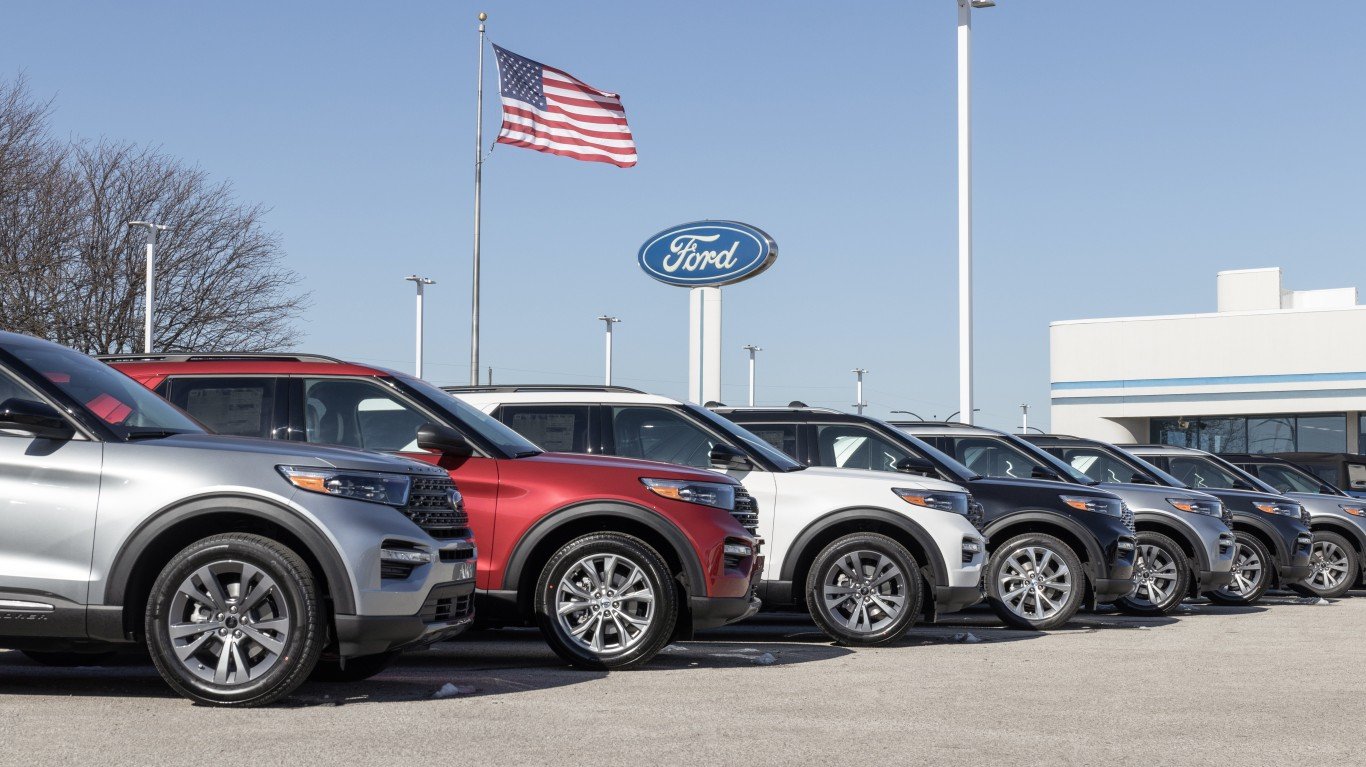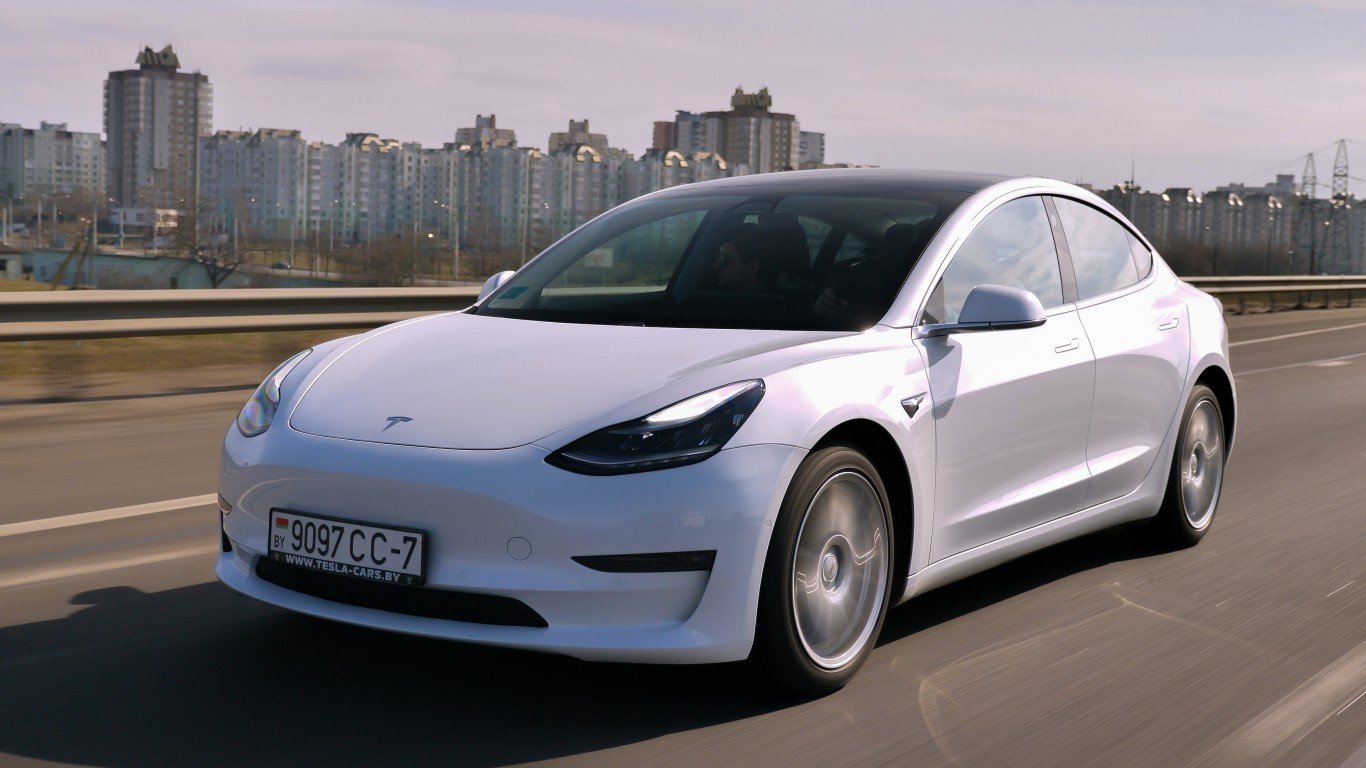 The number of cars and light trucks sold in the U.S. fell 25% over the past five years, from over 16.4 million for the model year beginning September 2005 to 12.4 million in the last complete model year. The sales of some models have slumped much more than that during the same period. To see why sales of some vehicles dropped so much, 24/7 Wall St. has reviewed the sales of cars and trucks, provided by car industry research firm Edmunds.com, that have lost the most in unit sales between the two periods.
The number of cars and light trucks sold in the U.S. fell 25% over the past five years, from over 16.4 million for the model year beginning September 2005 to 12.4 million in the last complete model year. The sales of some models have slumped much more than that during the same period. To see why sales of some vehicles dropped so much, 24/7 Wall St. has reviewed the sales of cars and trucks, provided by car industry research firm Edmunds.com, that have lost the most in unit sales between the two periods.
The auto industry has suffered during the latter half of the recent decade. To be sure the vehicles on our list didn’t simply suffer from the overall weakness, we only looked at those on Edmunds’ list of 20 vehicles that lost the most in total unit sales, and that have had sales drop more than 50% – double the industry trend. We used sales numbers from Edmunds. We also added base vehicle prices provided by the manufacturers, EPA data on gas mileage, and quality and reliability ratings from JD Powers.
What 24/7 Wall St. found is that many of the vehicles whose sales plunged were large pickup trucks that tend to get poor gas mileage. Nationwide, gasoline prices were $4 earlier this year and are still above $3.50 on average. In the case of some of the sedans and small trucks that get generally good MPG but still made this list, the reason was simply that the models are just old — sometimes decades old. The Mustang, for example, was first produced in 1964. While automakers try to keep models fresh by introducing new “generations” of vehicles — from modest changes to complete overhauls — this process doesn’t always work.
Another reason cars or trucks sales plummet is that the portion of their market becomes crowded. Most major car companies now offer large and mid-sized sedans. Some of the competition did not exist a decade ago. Hyundai now has over 9% of the U.S. market. VW, too, has been aggressive in its attempt to add to U.S. sales, taking away market share from other models.
No recent period in car company history has been a better example of how fickle buyers can be and how quickly consumers can change allegiances. On top of their huge labor cost issues, the decisions of some buyers to move to Japanese models made sales fall enough at GM (NYSE: GM) and Chrysler that they were forced into Chapter 11. Later, a huge series of recalls in 2010 hurt Toyota’s (NYSE: TM) sales. Hyundai was barely a presence in the U.S. five years ago, and is now a force in the small car market.
Model age, direct competition, manufacturer quality perceptions, car company balance sheets and gas prices can all contribute to the collapse of a model’s sales.
This is 24/7 Wall St’s cars Americans no longer drive.
10. Buick Lucerne
> Decrease in units sold: 62,266
> Pct drop: 71.5%
> Base car price: $29,730
> Fuel efficiency: 17 city, 27 hwy
> JD Powers quality score: 4/5
> JD Powers reliability score: 4.5/5
The Lucerne was introduced in 2005. Sales have dropped so much that the car was discontinued this year and production stopped in the early summer. Buick may have positioned the car badly. It has been marketed as a full-sized sedan to compete with mid-priced luxury vehicles made by Lexus, Acura, Lincoln and Mercedes. The Lucerne may be less expensive than those models, but buyers do not consider it in the luxury vehicle class.
9. Chevy Colorado
> Decrease in units sold: 62,977
> Pct drop: 67.2%
> Base car price: $17,395
> Fuel efficiency: 18 city, 25 hwy (for 4-cylinder)
> JD Powers quality score: 3.5/5
> JD Powers reliability score: 3/5
The Colorado is Chevy’s mid-sized pickup, and within the GM family, it competes directly with the GMC Canyon. Both were introduced in 2004. The truck may have too much competition to lift current sales by any significant level. It sits in a segment of the SUV market that includes the Ford (NYSE: F) Ranger, the Toyota Tacoma, and the Nissan Frontier.
8. Toyota Avalon
> Decrease in units sold: 64,325
> Pct drop: 69.6%
> Base car price: $33,195
> Fuel efficiency: 20 city, 29 hwy
> JD Powers quality score: 3/5
> JD Powers reliability score: 4/5
The Avalon is Toyota’s mid-priced, large-sized sedan. Overall, Toyota sales suffered this year after much of the company’s Japan production was shuttered because of the March earthquake. It is only now resuming in full. The Avalon is in a highly competitive portion of the market. Every major car company has a vehicle with similar characteristics and comparable price levels. Hyundai’s success in this part of the market has been remarkable over the past three years. The Avalon was first introduced in 1994 and is on its third generation.
7. Dodge Dakota
> Decrease in units sold: 70,039
> Pct drop: 83.8%
> Base car price: $23,210
> Fuel efficiency: 15 city, 20 hwy
> JD Powers quality score: 3.5/5
> JD Powers reliability score: n/a
The Dakota, marketed under the Ram brand, is a mid-sized pickup. It was introduced in 1986. The current, third generation of the truck was launched in 2005. The version was offered with only a club cab with two rows of seats. The Dakota was discontinued this year, with the last one being produced in August.
6. Chevy Tahoe
> Decrease in units sold: 75,814
> Pct drop: 50.9%
> Base car price: $37,980
> Fuel efficiency: 15 city, 21 hwy
> JD Powers quality score: 4/5
> JD Powers reliability score: 3.5/5
The Tahoe is Chevy’s full-sized SUV. Fully loaded with factory-installed features, the Tahoe can retail for as much as $55,000. The Tahoe also has direct competition within the GM family — the GMC Yukon. In addition, virtually every other U.S. and foreign car company has a vehicle in the same market segment. The truck was first sold in 1995. The current generation of the Tahoe, and the Yukon, were both introduced in 2007.
5. Jeep Liberty
> Decrease in units sold: 77,650
> Pct drop: 55.9%
> Base car price: $23,250
> Fuel efficiency: 16 city, 22 hwy
> JD Powers quality score: 2/5
> JD Powers reliability score: 2.5/5
The Liberty is the mid-priced model among the six that Jeep offers. The company currently offers more than one incentive to draw buyers — usually a sign that demand is low. Among these offers are zero percent financing for up to 60 months, and a $3,000 cash allowance. The Liberty was first introduced nine years ago. A new generation of the SUV was launched in 2008. Sales have declined since their peak in 2004.
4. Silverado 2500HD
> Decrease in units sold: 77,741
> Pct drop: 53.1%
> Base car price: $28,415
> Fuel efficiency: 12 city, 15 hwy
> JD Powers quality score: 3/5
> JD Powers reliability score: 3.5/5
The Silverado is Chevy’s flagship pickup. It competes with the industry leading Ford F-series and the Dodge Ram, along with several other pickups made by foreign manufacturers. The Silverado HD is the heavy duty version of the truck. It can pull a load of up to 17,800 pounds. The first HD models were introduced in 2001. Sales of the less-expensive Silverado 1500 have fallen by 21% over the past five years.
3. Mustang
> Decrease in units sold: 93,829
> Pct drop: 58.2%
> Base car price: $22,310
> fuel efficiency: 19 city, 31 hwy
> JD Powers quality score: 3/5
> JD Powers reliability score: 4/5
The high point of auto legend Lee Iaccoca’s career was not his revival of Chrysler but the launch of the Mustang in 1964. Many car industry historians say it was Ford’s fastest selling car since the Model A. Over 400,000 Mustangs were sold in the car’s first model year. The current version of the Mustang is the fifth generation of the automobile. Ford upgraded the Mustang engines this year, but that has not helped revive sales. The Mustang is in a highly competitive part of the market, which includes the Chevy Camaro.
2. Ford Taurus
> Decrease in units sold: 108,777
> Pct drop: 62.4%
> Base car price: $25,555
> Fuel efficiency: 18 city, 28 hwy
> JD Powers quality score: 4.5/5
> JD Powers reliability score: 3.5/5
The Taurus is one of the most successful Ford vehicles of all time. Its first model year was 1986, and Ford had sold one million units of the vehicle by 1989. The fourth generation of the Taurus was launched in 2000 and was discontinued in 2006 due to slow sales. Ford revived the Taurus in 2007, and upgraded it again last year.
1. Chrysler 300
> Decrease in units sold: 111,596
> Pct drop: 78.9%
> Base car price: $27,170
> fuel efficiency: 18 city, 27 hwy
> JD Powers quality score: 3/5
> JD Powers reliability score: 3.5/5
The 300 — a sports sedan first produced in 1999 — was the flagship car of the Chrysler model line in the middle of the last decade. The manufacturer sold a model under a similar name in the 1950s and 1960s. A new version of the 300 was released in 2005, but it has grown old quickly in the eyes of the consumer. The latest edition of the car was introduced this year, but sales have been modest.
Douglas A. McIntyre
Essential Tips for Investing: Sponsored
A financial advisor can help you understand the advantages and disadvantages of investment properties. Finding a qualified financial advisor doesn’t have to be hard. SmartAsset’s free tool matches you with up to three financial advisors who serve your area, and you can interview your advisor matches at no cost to decide which one is right for you. If you’re ready to find an advisor who can help you achieve your financial goals, get started now.
Investing in real estate can diversify your portfolio. But expanding your horizons may add additional costs. If you’re an investor looking to minimize expenses, consider checking out online brokerages. They often offer low investment fees, helping you maximize your profit.
Thank you for reading! Have some feedback for us?
Contact the 24/7 Wall St. editorial team.



